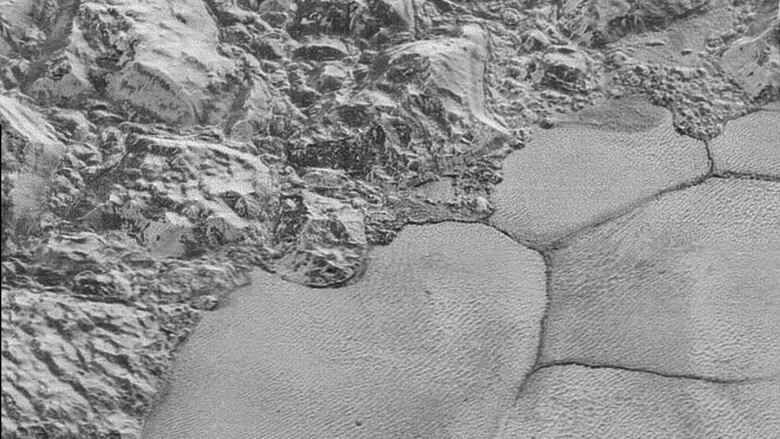Newly discovered dunes on Pluto are made of fine grains of frozen methane
Pluto joins Mars and Venus, Saturn's moon Titan and Neptune's moon Triton as solar system bodies with dunes

Scientists have detected another exotic feature on one of the solar system's most wondrous worlds:a large field of dunes on the surface of the distant, frigid dwarf planet Pluto apparently composed of wind-swept, sand-sized grains of frozen methane.
The dunes, spotted on images taken by NASA's New Horizons spacecraft during its 2015 flyby, sit at the boundary between a heart-shaped nitrogen glacier about the size of France called Sputnik Planitia and the Al Idrisi Montes mountain range made of frozen water, scientists said on Thursday.
"Pluto, even though it's so far away from Earth and so very cold, has a riot of processes we never expected to see. It is far more interesting than any of us dreamed, and tells us that these very distant bodies are well worth visiting," Brigham Young University planetary scientist Jani Radebaugh said.

The dunes cover about 2,000 square kilometres, roughly the size of Tokyo. Their existence came as a surprise. There was some doubt about whether Pluto's extremely thin atmosphere, mainly nitrogen with minor amounts of methane and carbon monoxide, could muster the wind needed to form such features.
Pluto, smaller than Earth's moon with a diameter of about 2,380 kilometres, orbits roughly 5.8 billion kilometresaway from the sun, almost 40 times farther than Earth's orbit, with a surface marked by plains, mountains, craters and valleys.
Dunes do have a habit of cropping up in a lot of surprising places.- MattTelfer,University of Plymouth
Methane, carbon monoxide, carbon dioxide and nitrogen, all gaseous on Earth, are rendered solid with Pluto's temperatures near absolute zero. Pluto's dunes were shaped by moderate winds reaching around 35 km/happarently blowing fine-grained frozen methane bits from mountaintops.
Pluto's dunes resemble some on Earth like those in California's Death Valley and China's Taklamakan desert, though their composition differs, Radebaugh said.
- The politics of Pluto: 10 years later, the bitter debate rages on
- NASA to fly tiny helicopter on next mission to Mars
Dunes have been detected elsewhere in the solar system, including planets Mars and Venus, Saturn's moon Titan and Neptune's moon Triton, University of Cologne physicist and geoscientist Eric Parteli said. Pluto's dunes probably formed within the past 500,000 years, and potentially more recently, Parteli added.
"Given we have dunes on the scorching surface of Venus under a dense atmosphere, and out in the distant reaches of the solar system at -230 Cunder a thin atmosphere, yes, dunes do have a habit of cropping up in a lot of surprising places," University of Plymouth planetary scientist Matt Telfer said.












_(720p).jpg)


 OFFICIAL HD MUSIC VIDEO.jpg)
.jpg)



























































































